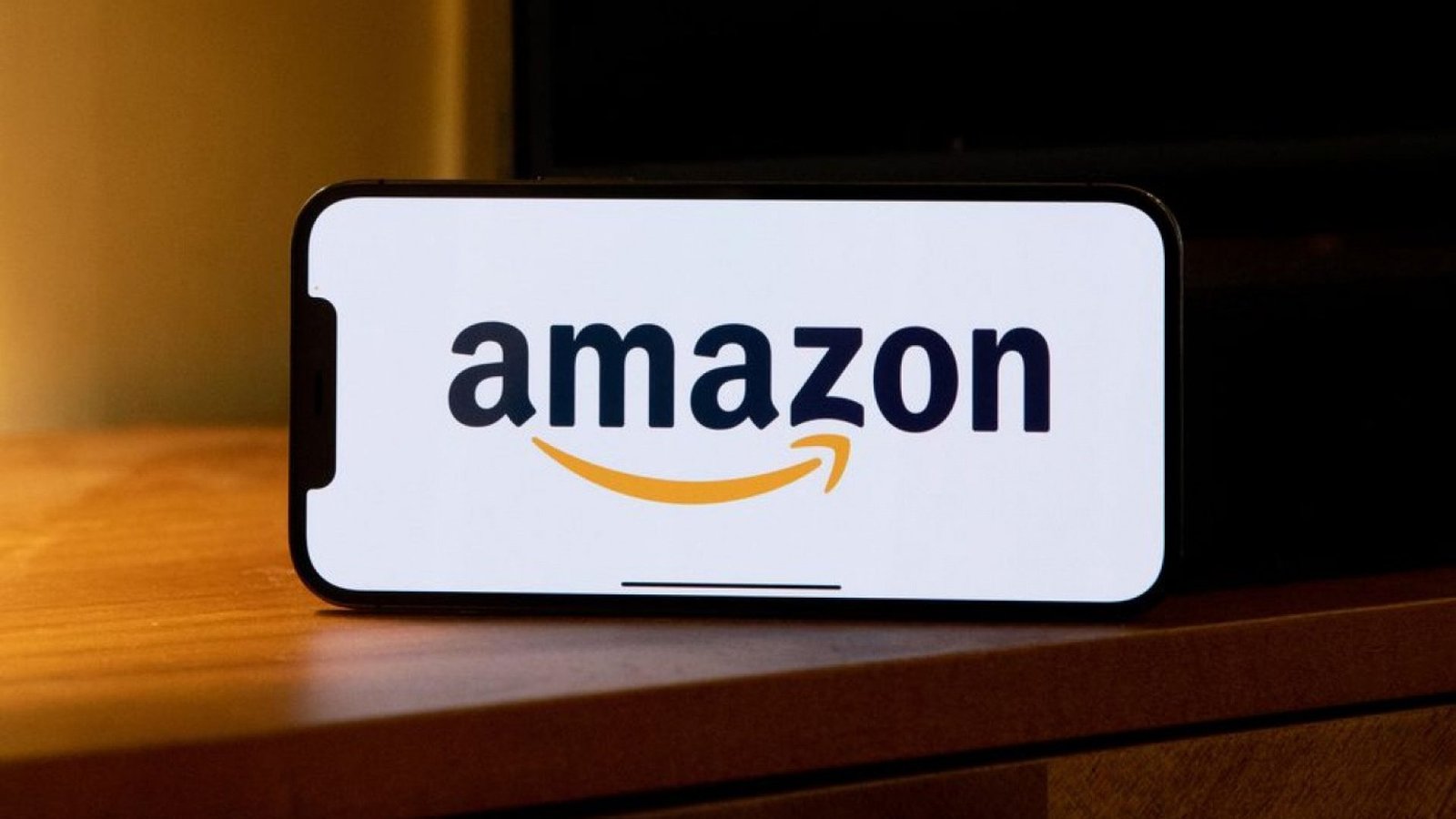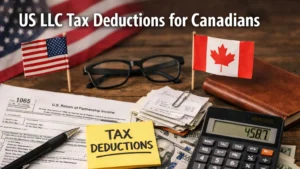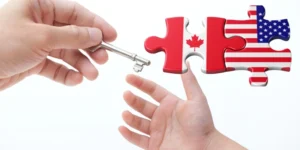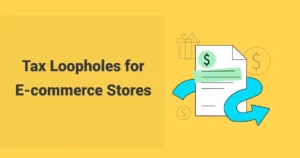Amazon is one of the biggest online selling spots worldwide. But do Amazon sellers in Canada and the U.S. need to pay taxes? In 2024, the average Canadian seller made about $30,000 in profits. Top sellers even pulled in over $100,000! Taxes on that cash can get tricky. And what about those 2025 tax rule updates?
We at SAL Accounting created this guide to help you keep more of your profit. It covers sales taxes, income taxes, and cross-border rules for Amazon sellers in Canada and the U.S. Don’t skip it.
Quick Takeaways
- Solo U.S. sellers pay 10%–37% federal tax; Canadians pay 15%–33% on profits.
- Self-employed? U.S. sellers face 15.3% up to $168,600; Canada takes 11.9% over $3,500.
- Amazon handles sales tax in 45 U.S. states and Canadian spots.
- Miss April 15 (U.S.) or April 30 (Canada) deadlines and penalties stack up fast.
- Cut taxes by deducting Amazon fees, shipping, and more in both countries.
Do Amazon Sellers Pay Taxes in Canada and the U.S.?
Yes, they do! Amazon sellers in Canada and the U.S. have to pay taxes. How much depends on how much you sell, if you’re solo or a company, where you and your buyers are, and the tax rules. You’ll deal with taxes in both countries. But here’s the good news: deductions can greatly shrink your tax bill!
Check out Bookkeeping for Amazon Sellers to streamline your tax process.
E-Commerce Taxes Amazon Sellers Pay in Canada and the U.S.
Amazon sellers in the U.S. and Canada deal with a few taxes from selling on the platform. It’s a cool way to earn cash, but you’ve got these taxes in both countries:
- Income Tax: Sellers in Canada and the U.S. pay federal income tax and provincial or state tax on their profits. That’s what you make after subtracting costs.
- Sales Tax: You collect sales tax from buyers and send it to the government based on where they live. Amazon usually does this for you.
- Customs Duties and Import Taxes: Selling across borders? You might pay taxes depending on the product’s value, type, and where it’s from.
- Self-Employment Tax/CPP: In the U.S., solo sellers pay taxes on profits for Social Security and Medicare. In Canada, solo sellers pay taxes on profits for their pensions (CPP).
We’ll dive deeper into each tax and lots more coming up. Keep reading for all the details!
➜ Read More: Canadian Working Remotely for U.S. Company Taxes

Figuring Out Income Tax for Amazon Sellers in Canada and the U.S.
We’re simply breaking down the tax rules for Amazon sellers in Canada and the U.S.. Here’s the scoop for both countries:
Income Taxes for Canadians Selling on Amazon
If you sell on Amazon in Canada, here or across borders, with FBA or FBM, you pay income tax on your profits. That’s what you keep after costs. You tell the Canada Revenue Agency (CRA) everything you make. But your business structure also matters:
Solo Sellers
Lots of new sellers go solo. If that’s you, your profit counts as personal income. Canada takes 15% off the first $55,867 you earn. It jumps to 33% if you make over $246,752. Provinces add their own tax, too, like 5.05% to 13.16% in Ontario.
Example: Sara sells phone cases on Amazon.ca from Ontario. She makes $60,000 and spends $20,000. Her profit is $40,000. Here’s what she pays:
- $40,000 × 15% = $6,000 (federal tax)
- $40,000 × 5.05% = $2,020 (Ontario tax)
Companies
Small companies making under $500,000 pay 15% federal tax. Earn over $500,000? It climbs to 28% after a 10% discount for Canadian income. Provinces tack on more, like 11.5% in Ontario if under $500,000 or 12.2% if over.
Example: Mike runs a pet toy company on Amazon in Ontario. He earns a profit of $200,000, under $500,000. His taxes look like this:
- $200,000 × 15% = $30,000 (federal tax)
- $200,000 × 11.5% = $23,000 (Ontario tax)
Key Point: Selling on Amazon.com? Canadians report profits in Canadian dollars to the CRA. They use the year’s average exchange rate.
Additional Points:
- FBA (Fulfilled by Amazon): You send your stuff to Amazon’s warehouses, and they store, pack, and ship it for you.
- FBM (Fulfilled by Merchant): You keep your stuff, pack it, and ship it yourself when someone buys it.
Income Tax for U.S. Amazon Sellers
If you sell on Amazon in the U.S., you owe the IRS some of your profits as federal income tax plus state tax, depending on where you live. Your Amazon cash gets taxed no matter where your buyers are, here or abroad. Here’s how it works for U.S. sellers.
Solo Sellers
New sellers often go solo. You report your profits and pay tax on them. Federal income tax rates run from 10% to 37% in 2025, based on how much you make. States add their own tax, too, 0% in places like Texas and up to 13% in spots like California.
Example: Jack sells mugs on Amazon.com from Ohio. He earns $50,000 in profit. His tax looks like this:
- $50,000 × 22% = $11,000 (Federal Tax)
- $50,000 × 5% = $2,500 (Ohio State Tax)
LLC
A one-person LLC pays tax on profits like a solo seller unless you pick company rules. Multi-person LLCs split taxes like partners unless you choose differently.
➜ Read More: Types of E-Commerce Taxes in Canada
S Corp or C Corp
With an S Corp, you pay tax once on your personal income, nice and simple. A C Corp means the company pays 21% on profits. Then you pay extra (0% to 20%) on cash you take out. C Corps cost more overall.
Example: Lisa’s C Corp sells candles and makes a $100,000 profit in Nevada. The company pays:
- $100,000 × 21% = $21,000
She takes $50,000 as salary and pays:
- $50,000 × 22% = $11,000 (No state tax—Nevada’s 0%)
Partnership
You team up with someone to sell on Amazon. You each pay tax on your share. It’s easier than a C Corp but saves less than an S Corp.
Example: Amy and Tom sell books together in New York. They split $80,000 profit—$40,000 each. They pay:
- $40,000 × 22% = $8,800 each (Federal Tax)
- $40,000 × 6.85% = $2,740 each (NY State Tax)
🌟 Pro Tip: Selling on Amazon.ca? You don’t usually pay U.S. income tax unless you keep stuff in Canada.
Sales Tax for Amazon Sellers in the U.S. and Canada
Buyers pay sales tax on stuff you sell on Amazon. Sellers in Canada and the U.S. might need to collect it and send it to the government. Lucky for you, Amazon often helps out. Here’s how it works in Canada:
Amazon Sales Tax in Canada
Canadian sellers deal with sales tax that mixes national and provincial rules. Rates change depending on the province. Amazon steps in to collect it for you. Here’s what you’ll see:
- GST: 5% all over Canada, Goods and Services Tax.
- HST: Adds provincial tax to GST, like 13% in Ontario.
- PST: Extra tax in some spots, like 7% in British Columbia and 6% in Saskatchewan.
- QST: Quebec’s own tax, 9.975%, on top of GST.
Check the table below for a quick rundown of sales tax types and rates across Canada’s provinces and territories:
| Tax Type | Provinces/Territories | Tax Rate |
| GST Only | Alberta, Nunavut, Northwest Territories, Yukon | 5% |
| GST + PST (BC) | British Columbia (BC) | 5% GST + 7% PST |
| GST + RST (MB) | Manitoba (MB) | 5% GST + 7% RST |
| GST + QST (QC) | Quebec (QC) | 5% GST + 9.975% QST |
| GST + PST (SK) | Saskatchewan (SK) | 5% GST + 6% PST |
| HST (ON) | Ontario (ON) | 13% HST |
| HST (NB, NL, NS, PEI) | New Brunswick (NB), Newfoundland (NL), Nova Scotia (NS), Prince Edward Island (PEI) | 15% HST |
Amazon grabs the sales tax from buyers on Amazon.ca and sends it to the government. If your sales top $30,000 in a 12-month stretch, you sign up with the CRA. You collect GST/HST and get back the tax you paid on business stuff. Under $30,000? You’re a small supplier. You don’t have to sign up, but you can grab some cash back.
Example: Imagine Emma sells hats on Amazon.ca. A hat costs $20. Sales tax looks like this:
- $20 × 13% (HST) = $2.60
Amazon collects it and sends it to the CRA. If her sales exceed $30,000, she registers for GST/HST.
🌟 Pro Tip: Selling on Amazon.com to U.S. buyers as a Canadian? There is no Canadian sales tax; just follow U.S. rules.
➜ Also Read: GST/HST Return in Canada
Sales Taxes for U.S. Amazon Sellers
Sales tax in the U.S. changes depending on the state, anywhere from 0% to over 10%. Amazon handles collecting and sending it in 45 states plus D.C. You step in only if you sell outside Amazon and have a tie, like stuff stored in a state. Five states skip state sales tax: Alaska, Delaware, Montana, New Hampshire, and Oregon. But Alaska adds local taxes.
Example: Ben sells glasses on Amazon.com. In Texas, with an 8.25% sales tax, a $10 pair gets $0.83 added:
- $10 × 8.25% = $0.83
Amazon collects it and pays for it. Ben only deals with it if he sells in a state where he keeps stuff.
🌟 Key Point: Storing FBA inventory in a state gives you a “nexus.” You might owe sales tax there, even if you don’t live there.
Customs and Import Taxes for U.S. and Canada Amazon Sellers
Bringing stuff into Canada or the U.S. for Amazon? You’ll deal with customs duties and import taxes. Here’s how it goes.
Canada: Customs Duties and Import Taxes
You might pay fees when you bring stuff into Canada for Amazon. That’s customs duties and import taxes. The fees depend on what you’re bringing in and where it’s from. Import taxes hit when your products show up. Here’s how it works in Canada:
- Goods from the U.S. under CUSMA (Canada-U.S.-Mexico Agreement) skip customs duties.
- You still pay 5% GST or HST, like 13% in Ontario, on imports over $20 CAD.
- If your goods cost $20 or less, you dodge those taxes.
- You cover these costs for inventory, not your buyers.
Example: Tara sends $1,000 worth of U.S.-made shirts to Ontario via Amazon.ca FBA. CUSMA means no duty. But she pays Ontario’s HST:
- $1,000 × 13% = $130
🌟 Pro Tip: Duty rates change by product and where it’s from, like 10-18% for clothes from non-CUSMA places like China. Check the tariff code to be sure.
United States: Customs Duties and Import Taxes
If you ship stuff to the U.S. for Amazon, you might pay customs duties. The fees depend on what you’re sending and where it’s from. Goods from Canada often skip duty, thanks to CUSMA. Shipments under $800 dodge duty, too. But you could still owe a tiny fee, like 0.3464% of the value, called MPF.
Example: Greg brings $500 worth of Canadian mugs for Amazon.com FBA. CUSMA means no duty. He just pays a $1.73 MPF fee:
- $500 × 0.3464% = $1.73
🌟 Pro Tip: Ship small loads under $800 to the U.S. It’s duty-free and saves you money.
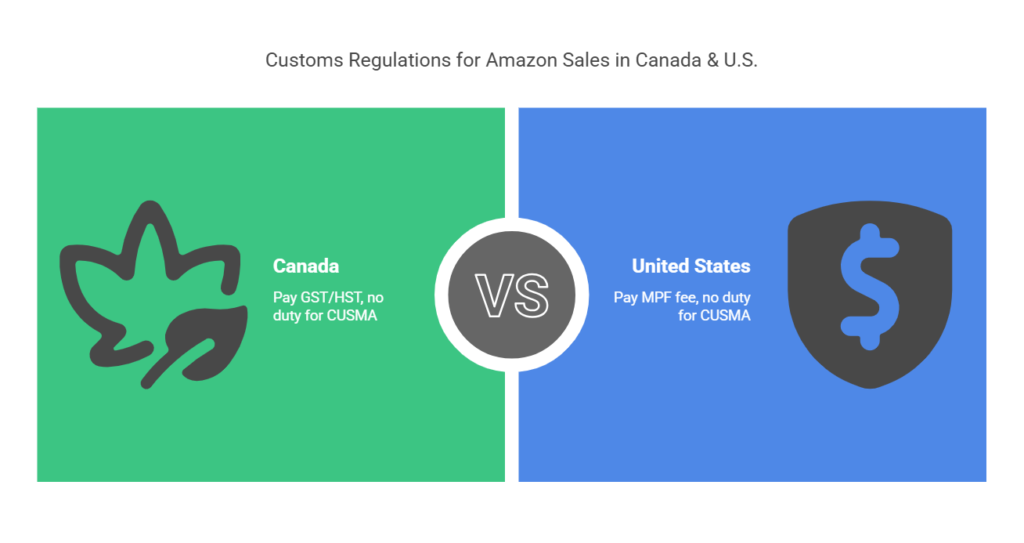
CPP and Self-Employment Taxes in Canada and the U.S.
Lots of Amazon sellers in Canada and the U.S. count as self-employed. That means you pay these taxes:
Canada: CPP for Amazon Sellers
Solo sellers in Canada pay 11.9% of their profits to the Canada Pension Plan (CPP). You owe this if your profit lands between $3,500 and $81,200 in 2025. If you’re 19 to 70, you report it on your self-employed income taxes for your future pension.
Example: Ryan makes a $50,000 profit selling games on Amazon.ca. It fits between $3,500 and $81,200. He pays this for his pension:
- $50,000 × 11.9% = $5,950
Need more help with this? Our self-employed accountant is here.
Let SAL Accounting handle the numbers so you can focus on selling. Contact us today!
U.S.: Self-Employment Tax for Amazon Sellers
Solo sellers pay 15.3% of their profits for self-employment tax in the U.S. You pay this rate if your profit is between $400 and $168,600 in 2025. Over that, you drop to 2.9%. It covers:
- Social Security: 12.4% up to $168,600, nothing above that.
- Medicare: 2.9% on all profits, no cap.
Example: Kelly earns $60,000 profit selling planners. She pays 15.3% for Social Security and Medicare:
- $60,000 × 15.3% = $9,180
If she makes $170,000, she pays 2.9% ($40.60) on the extra $1,400.
Tax Return & Filing Basics for Amazon Sellers in the U.S. and Canada
Here’s the rundown on forms and filing you need to handle taxes for selling on Amazon in the U.S. and Canada:
1. Yearly Tax Papers
Canada: You send your taxes to the CRA by April 30 each year. Solo sellers get extra time, until June 15, to finish the paperwork, but you still pay by April 30. Grab a T1 Form and add T2125 to show what you made on Amazon. If your profit is over $3,500, you pay up to 33% plus 11.9% for your pension (CPP).
Companies use a T2 Form and pay a 15% tax if profits stay under $500,000. Check the form T2125 below:

United States: U.S. sellers file a 1040 form with the IRS by April 15. Earn over $400? Add Schedule C for income tax (10-37%) and Schedule SE for a 15.3% self-employment fee. Pay it all by April 15. See the 2025 1040 form below:
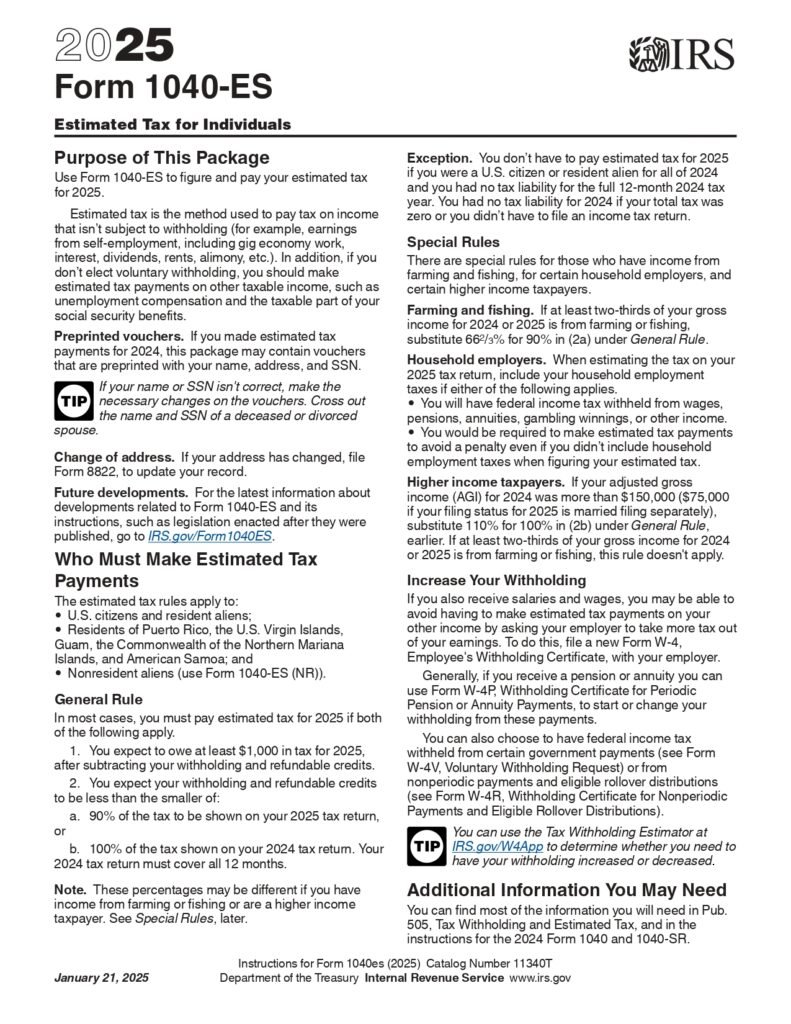
➜ Learn More: File Your U.S. Tax Return While Living in Canada
2. Sales Tax Stuff
Canada: If your sales top $30,000 in 12 months, you file a Form GST34-2. In Quebec, you might need a QST Form too.
United States: Amazon takes care of sales tax in most U.S. states. If they don’t, or your stuff’s stored where they miss you, file state sales tax forms yourself and send them in.
3. Cross-Border Rules
Canadians on Amazon.com: Send a W-8BEN Form to skip a 30% U.S. tax cut on your sales cash. Then, file a T1 form (or T2 for companies) in Canada with all your profits, even U.S. ones, in Canadian dollars. Consult a U.S.-Canada cross-border tax accountant if needed. Look at the form below:

U.S. Sellers on Amazon.ca: Stick with your 1040 Form (or 1120 for companies). If Amazon stores your stuff in Canada, sign up and file a GST34 form there, too.
What Does Amazon Do for You?
If you make $2,500 or more in the U.S., Amazon hands you a 1099-K by January 31. It shows your earnings for your Schedule C. Canadians don’t get that. Amazon drops Sales Summaries in Seller Central instead. You check those to see what you made. Here is the 1099-K form:

🌟 Pro Tip: At SAL Accounting, we’ve seen it tons of times. Amazon sellers aren’t sure how to figure out their revenue, Amazon fees, and sales tax. Here’s an easy fix: go to your Amazon Seller Central. Hit “Reports.” You’ll see clear breakdowns there: the sales tax you collected, commissions Amazon takes, and other fees. It’s a breeze to get the right numbers for your tax filing.
Handy Deductions for U.S. and Canada Amazon Sellers
Here are some deductions you can subtract from your taxes in both countries:
- Products You Buy: Cash spent on things to sell, like supplies, counts. You deduct it.
- Shipping Costs: Do you pay to ship stuff to customers or Amazon? Take it off your taxes.
- Marketing Costs: Spend money on ads or promos. Deduct it all.
- Home Office: Use part of your home for Amazon work. Count that chunk, like rent or internet, as a deduction.
- Expert Help: Hire an accountant or pro? Deduct what you pay them.
- Amazon Fees: Amazon charges you for listing or shipping. Knock those Amazon fees in Canada and the U.S. off your taxes.
Check the table below for a quick look at Amazon fees for sellers in the U.S. and Canada:
| Fee Type | United States | Canada |
| Selling Plan | Individual: $0.99 per item sold Professional: $39.99/month | Individual: CAD $1.49 per item sold Professional: CAD $29.99/month |
| Referral Fees | Percentage of the total sale price, varies by category | Percentage of the total sale price, varies by category |
| Books | 15% | 15% |
| Consumer Electronics | 8% | 8% |
| Personal Computers | 6% | 6% |
| Clothing & Accessories | 17% | 17% |
| Beauty Products | 8% for items ≤ $10, 15% for items > $10 | 8% for items ≤ CAD $10, 15% for items > CAD $10 |
| Fulfillment by Amazon (FBA) | Depends on size & weight for storage & shipping. | Varies by size & weight for storage and delivery. |
Cross-Border Tax Compliance & Tips for Amazon Sellers in Canada and the U.S.
Selling and shipping stuff between Canada and the U.S.? You need to know a few things:
- Income Taxes: Canada’s easier on companies, they pay 15%. Solo sellers there face up to 33%. In the U.S., solo sellers pay 10% to 37% of profits. C corporations fork over 21%.
- Self-Employment Taxes: The U.S. takes more cash, 15.3% of your profit for Medicare and Social Security. Canada’s CPP grabs 11.9%, but only up to $81,200.
- Sales Taxes: U.S. sales tax changes by state—0% to over 10%. Canada keeps it simpler with one system and a $30,000 cutoff. Amazon sorts it out in most spots for both.
- Import Taxes: Canada adds a tax every time—5% or more. The U.S. skips it for stuff under $800. Canada costs more unless you bring in U.S. goods duty-free with CUSMA.
➜ Learn More: How to Report Canadian Income on a US Tax Return

Tax Tricks & Strategies to Keep More of Your Amazon Profit
Here are some easy ways to hang onto more of your profits from selling on Amazon.
1. Pick a Smart Business Setup
Got big earnings in Canada? Set up a company and pay just 15% tax, way less than the 33% solo sellers face there. In the U.S., go with an S Corp to dodge double taxes, paying once at 10-37%. A C Corp in the U.S. pays 21%, and then you pay again for what you take out. Solo’s easy but hits you with extra tax in both places.
2. Sell Where Taxes Stay Low
Canadians, sell to U.S. buyers on Amazon.com to skip Canada’s sales tax hassle, while in the U.S., stick to states like Oregon or Montana with no sales tax to keep your costs down.
3. Live Abroad (U.S. Sellers)
Live outside the U.S.? You might skip taxes on $130,000 of your 2025 Amazon profits. You still file, but staying abroad saves you cash.
🌟 Pro Tip: U.S. sellers storing stuff in Canada means GST/HST. Check your FBA spots to avoid surprises.
➜ Also Read: Cross-Border Inheritance Tax Between Canada and the U.S.
4. Pay Taxes Quarterly
Lots of sellers in Canada and the U.S. pay taxes four times a year, called quarterly estimated taxes. In the U.S., solo sellers owing $1,000 or more in total tax pay on April 15, June 15, September 15, and January 15. In Canada, you pay quarterly if you owe $3,000 or more, due March 15, June 15, September 15, and December 15.
Case Study: Quarterly Tax Skip
Problem: A client got in touch with us about the problem he faced. His Amazon.ca store in Mississauga made a $50,000 profit a year selling kitchen gadgets. He didn’t know about quarterly taxes. As a solo seller, he owed $7,500 in federal income tax and CPP combined and missed the March 15 payment, looking at a $400 late fee.
What We Did: I jumped on it fast, figured the quarterly payments, about $1,875 each, and filed late with a note to ditch the fee. I set them up for June 15, September 15, and December 15, too.
The Result: He now sends $1,875 each quarter and skips the $400 penalty. He keeps his cash steady and stays cool with the CRA.
5. Get Some Expert Help
Feeling lost with Amazon taxes? An accountant who knows this stuff can save the day. They find tricks that work just for you and help you keep more cash from your Amazon gig. Sell in the U.S.? Work on Amazon.ca as a Canadian? Or ship across borders? Pick a professional e-commerce tax accountant, and taxes won’t bug you anymore!

Final Thoughts
Amazon sellers in Canada and the U.S. deal with taxes like sales tax, income tax, and self-employment tax. Solo or company, local or cross-border, you want to dodge tax headaches on Amazon. That’s why we made this guide, it’s got your back and helps you keep more of your hard-earned cash.
Contact us at SAL Accounting for more details. We offer custom fixes just for you. We won’t let taxes slow you down!
Keep your business raking in cash while we handle the latest e-commerce rules.
Frequently Asked Questions (FAQs)
You can’t go fully tax-free, but deductions, like shipping costs and Amazon fees, cut your tax bill a lot.
Yes! Canadian sellers pay income tax on profits and sales tax if sales hit $30,000.
Sales tax is what buyers pay on your stuff. Amazon usually collects it. Income tax is what you pay on profits after costs.
Only if you store FBA stuff in Canada, then you file a GST34 form.
It depends on where you’ve got a tie, like FBA inventory, Amazon handles it in 45 states plus D.C., but not everywhere.
You might owe it yourself if Amazon doesn’t cover it, like if you sell outside Amazon or in states where your stuff’s stored.
Yes, you need one from the CRA if your sales reach $30,000 in 12 months.
Canada: April 30 to pay; June 15 to file for solo sellers; U.S.: April 15. Quarterly taxes are March/June/Sept/Dec 15 for Canada, April/June/Sept/Jan 15 for the U.S.
